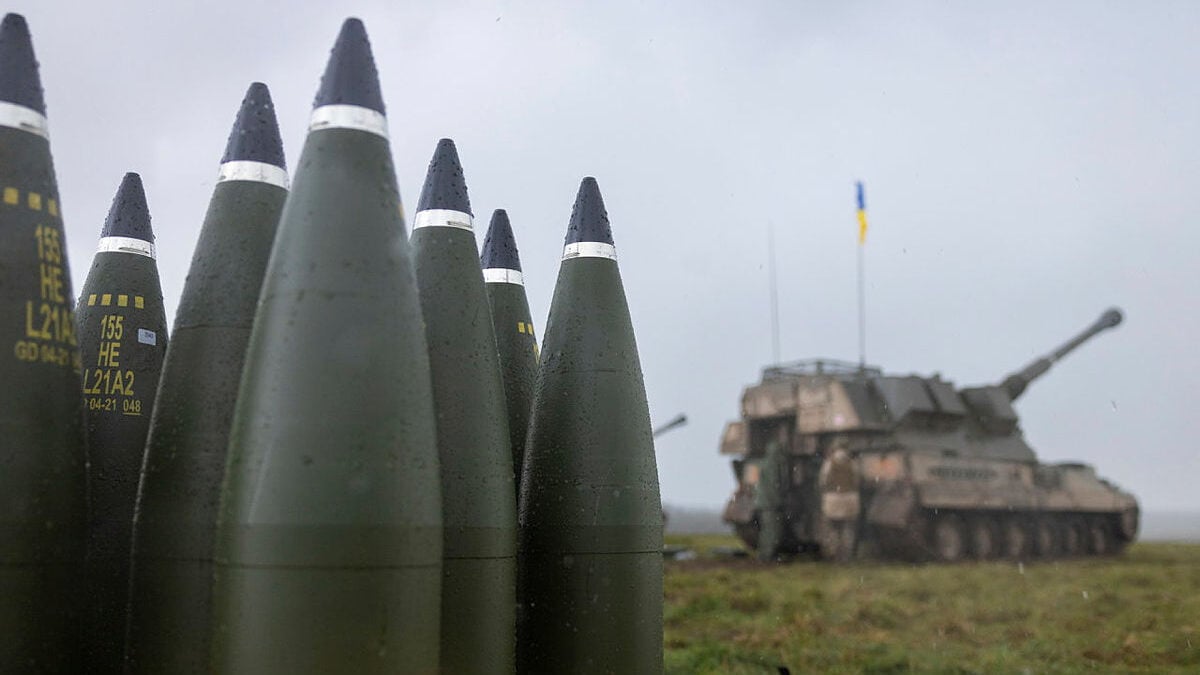
A stack of 155mm artillery rounds sit behind the line of AS90 self propelled guns and their Ukrainian operators (UK MoD)
BELFAST — Amid a global rush to buy defense systems, last year actually saw a fall in annual weapons sales by leading US defence companies, contributing heavily to the top 100 global defense companies suffering a real terms revenue dip of 3.5 percent, according to new data from a Swedish conflict and armaments research group.
In a report released today, the Stockholm International Peace Research Institute (SIPRI) said that weapon sales and “military services” from the 100 companies amounted to $597 billion last year, marginally higher in monetary terms than 2021 when a figure of $592 billion was recorded but actually a few percentage points lower when factoring in inflation.
The real terms revenue decrease between 2021 and 2022 for the 100 firms “was chiefly the result of falling arms revenues among major companies in the United States,” noted the report, adding that US competitor revenues across Asia and Oceania and the Middle East had, by contrast, “increased substantially” in the same period. Arms revenues by the 42 US companies on the top 100 list fell by 7.9 percent to $302 billion in 2022, the report said. From that group, 32 firms posted a fall in year-on-year arms revenue. US suppliers accounted for 51 percent of the top 100 arms revenues.
The report draws on those regions faring better than the US and European suppliers as a result of them better able to respond to “increased demand within a shorter time frame,” as compared to a slower pace of orders in peacetime.
“This was especially true in countries where companies maintain responsive ‘ever-warm’ manufacturing capabilities, such as Israel and South Korea, and those where companies tend to rely on short supply chains,” added the report.
RELATED: How South Korea’s defense industry transformed itself into a global player
The US industrial problems exposed by SIPRI come at a time when US lawmakers are fighting over spending bills, with billions of dollars in aid for Ukraine and Israel at stake.
SIPRI also forecasts an uptick in new equipment orders that could see a significant increase in global arms sales “in the next few years.”
Despite weapons orders increasing vastly since the war in Ukraine, contractors across the US and Europe have been unable to implement production ramp ups due to “labour shortages, soaring costs and supply chain disruptions,” according to the report.
The SIPRI figures are somewhat skewed because “late in the year” orders were not included in the document due to defense contractor revenues behind a time lag between orders and production.
Trends to have emerged from the report included top 100 arms revenues for Asia and Oceania being higher than those from European companies for the second year in a row. The former group (made up of 22 suppliers) record arms revenues of $134 billion — a 3.1 percent jump compared to 2021.






















